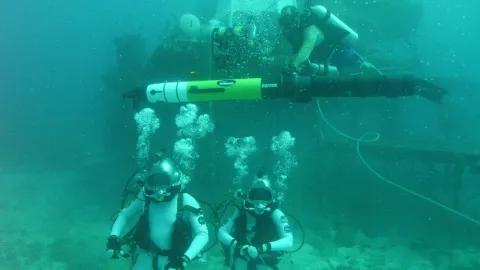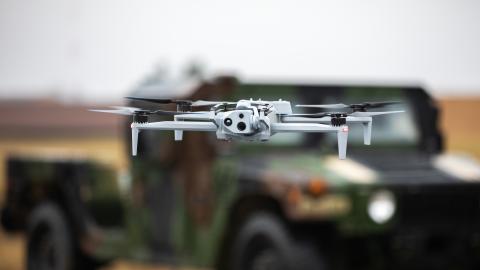In the wake of North Korea’s test Friday of an intercontinental ballistic missile (ICBM) capable of reaching the continental United States – following a test of a similar missile test July 4 – President Trump told reporters Monday: “We’ll be able to handle North Korea.” But how?
The best way to stop an assassin is to catch him before he leaves his house. The best way to stop a blackmailer is to make him realize he’s going to hurt himself more than he can hurt you.
Experts say it may be less than a year before North Korean dictator Kim Jong Un has the capability to miniaturize a nuclear warhead so it can fit on one of his ICBMs. Once that happens, our country and many others will be vulnerable to nuclear blackmail by North Korea’s unpredictable leader.
As a result, the Pentagon and Congress have been scrambling to increase our missile defense options. On Sunday the U.S. successfully intercepted a simulated intermediate-range ballistic missile using the Terminal High Altitude Area Defense (THAAD) system, following a successful test in May of a ground-based interceptor to successfully shoot down a U.S.-launched mock ICBM fired from Kwajalein Atoll in the Pacific.
These successes are technological firsts, and their designers deserve our kudos and thanks. The problem is that these ground-based systems only shoot down an incoming ballistic missile in its terminal phase, toward the end of its flight. That narrows the margin for error. If the interceptor misses or intercepts a nuclear-armed missile too close to a target like Honolulu or Los Angeles, the result could still be catastrophic.
But what if we can stop that missile before it leaves North Korean air space?
We need to intercept a North Korean missile in its much earlier boost phase. Large multi-stage rockets need high-thrust booster engines to get out the atmosphere, with the boosters then dropping away when the missile achieves orbit.
Destroying a missile at this early boost phase has many advantages. A ballistic missile generates the greatest heat at launch, making it easiest for long-range infrared sensors to detect. The early boost phase is also the slowest part of the launch, so the missile loses any advantage it might have in terms of speed in its later descent.
A boost-phase intercept (BPI) can’t be done from a ground or sea-based ballistic missile defense system like THAAD or the Navy’s Aegis: they can’t detect the launch soon enough. Our Missile Defense Agency is working on a BPI plan using high-energy lasers; but that technology is at least five years away.
Congress is pushing for a space-based system that’s even further in the future.
Fortunately, the technology exists right now to build a BPI system using unmanned aerial vehicles – commonly known as drones – stationed at high altitudes outside North Korean air space. These could carry infrared sensors and a conventional anti-missile missile of 225 kilograms – more than enough range and firepower to bring down even a large ICBM in its boost phase.
Once a launch is detected, the anti-missile missile’s high velocity (3.5 to 3.8 kilometers per second) gives its on-the-ground operators nearly a minute to decide to intercept. That’s plenty of time to initiate the kill chain.
What’s more, a boost-phase intercept comes early enough to make sure that any debris drops into the Sea of Japan, or even over North Korean territory.
This is no science fiction fantasy. It’s the brainchild of former science and technology director for President Reagan’s Ballistic Missile Defense Organization, Dr. Leonard Caveny.
Caveny points out that we already have unmanned aerial vehicles capable of carrying multiple interceptor missiles of this size. U.S. fighter aircraft have successfully conducted BPI tests using missiles of this type. Putting those missiles on a rotating drone patrol off the North Korean coastline would mean round-the-clock surveillance and detection – and a vital extra layer of security from missile attack on our country.
The deputy director-general of our own Missile Defense Agency has said that BPI is the next goal for missile defense. Caveny estimates that a proof-of-concept BPI launch would cost less than $25 million and could be ready in less than two years – probably sooner, if we focus our energies on this low-cost solution to Kim’s nuclear blackmail.
The best way to stop an assassin is before he leaves his house. The best way to stop Kim Jong Un is to blow up his missiles before they leave his house – and before they get anywhere close to our shores. We need to move forward as quickly as possible to develop our capability to conduct a boost-phase intercept of Kim’s missiles.















